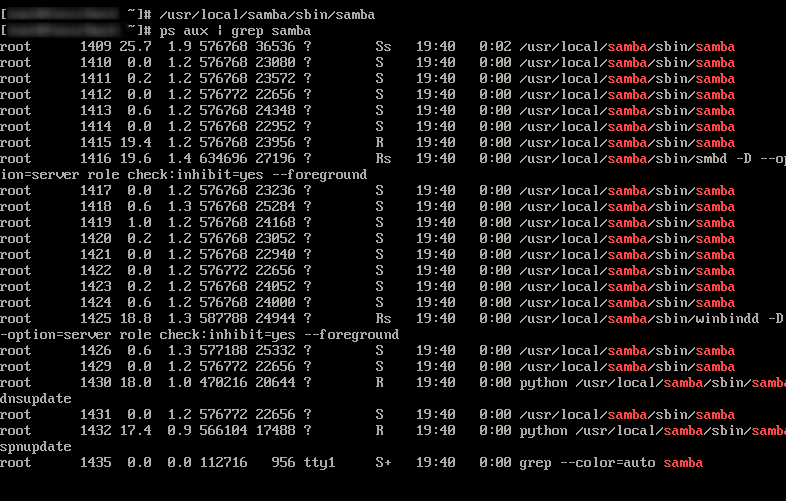

In this example we will name our secured share 'restricted' and create a group with the same name on our host. Īdding shares with user access control is very similar, with an additional requirement that we need to create a group that is allowed to access the share, and add our user to it. This share is akin to anonymous uploading with FTP. To start, we will create a share accessible to all users even unauthenticated ones. Open up the Samba configuration file in your favourite editor and fill it in with the appropriate information sudo vim /etc/samba/smb.conf Workstation domain WORKGROUP Editing the configuration file
Centos samba server setup pro#
To find this out, open a command prompt (cmd.exe) and enter the following: net config workstation Software version Windows 8.1 Pro sudo mv /etc/samba/smb.conf /etc/samba/ Finding your Windows DomainĪt this point, we can proceed no further without a key piece of information: the Windows domain we wish to place our machine on. It is generally considered to be a best practice to back up the original configuration file before modifying it, so it can be reverted to the original in case of a mistake or error.
Centos samba server setup install#
To install samba run the following command (assuming your user has sudo privileges): sudo yum install samba samba-client samba-commonĬonfiguration files are typically located in the /etc directory, and Samba is no exception - its main configuration file, smb.conf, is located in /etc/samba.
Centos samba server setup how to#
The easiest part of this how to will be the actual installation. If you have a mixed networking environment with Windows and Linux machines, Samba is an essential tool to get all of your devices playing nicely. Specifically, it is an open source implementation of SMB/CIFS protocol. Valid users = on to samba on your pc and try to login the secured folder and create a file.Samba is a service that allows Linux machines to access and share files, folders and printers with Windows machines. Press enter to see a dump of your service definitions Rlimit_max: increasing rlimit_max (1024) to minimum Windows limit (16384) Load smb config files from /etc/samba/smb.conf # chown -R cannon:smbgrp secured/ # vim /etc/samba/smb.confīrowsable = yes # systemctl restart smb.service

# smbpasswd -a cannon # mkdir -p /samba/secured # ls -l anonymous/ # systemctl restart smb.serviceīrowse your server ip address from your pc, go to anonymous folder & try to create a file.ī> Secured samba server. #= Share Definitions =Ī> Configure a anonymous samba share folder. # yum install samba samba-client samba-commonĬonfigure samba # cp -pf /etc/samba/smb.conf /etc/samba/ Because of all that it offers, Samba has grown in popularity, and continues to do so, every year since its release in 1992. Samba is a software package that gives network administrators flexibility and freedom in terms of setup, configuration, and choice of systems and equipment. It can function both as a domain controller or as a regular domain member. Samba is an important component to seamlessly integrate Linux/Unix Servers and Desktops into Active Directory environments. Since 1992, Samba has provided secure, stable and fast file and print services for all clients using the SMB/CIFS protocol, such as all versions of DOS and Windows, OS/2, Linux and many others.

Samba is the standard Windows interoperability suite of programs for Linux and Unix.


 0 kommentar(er)
0 kommentar(er)
